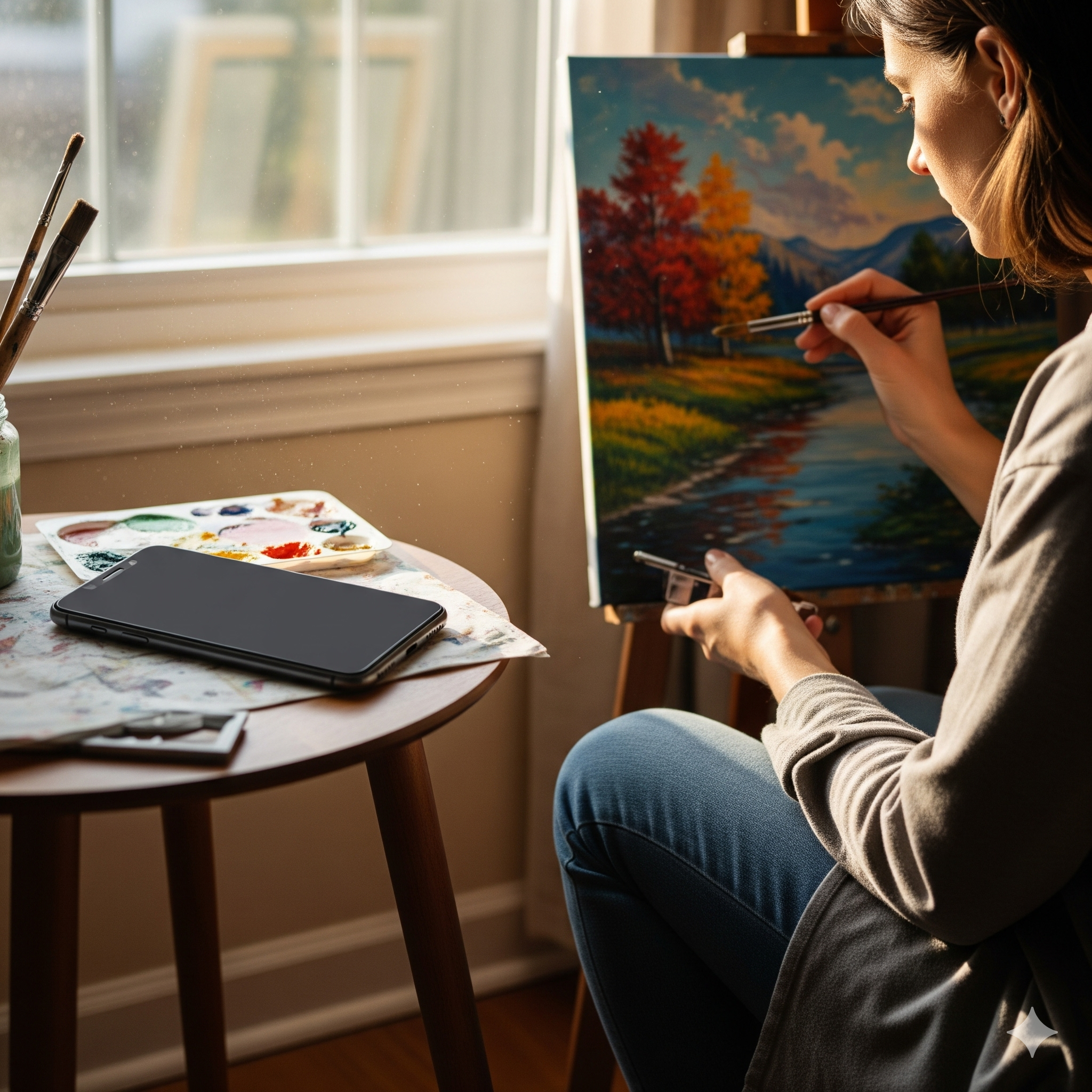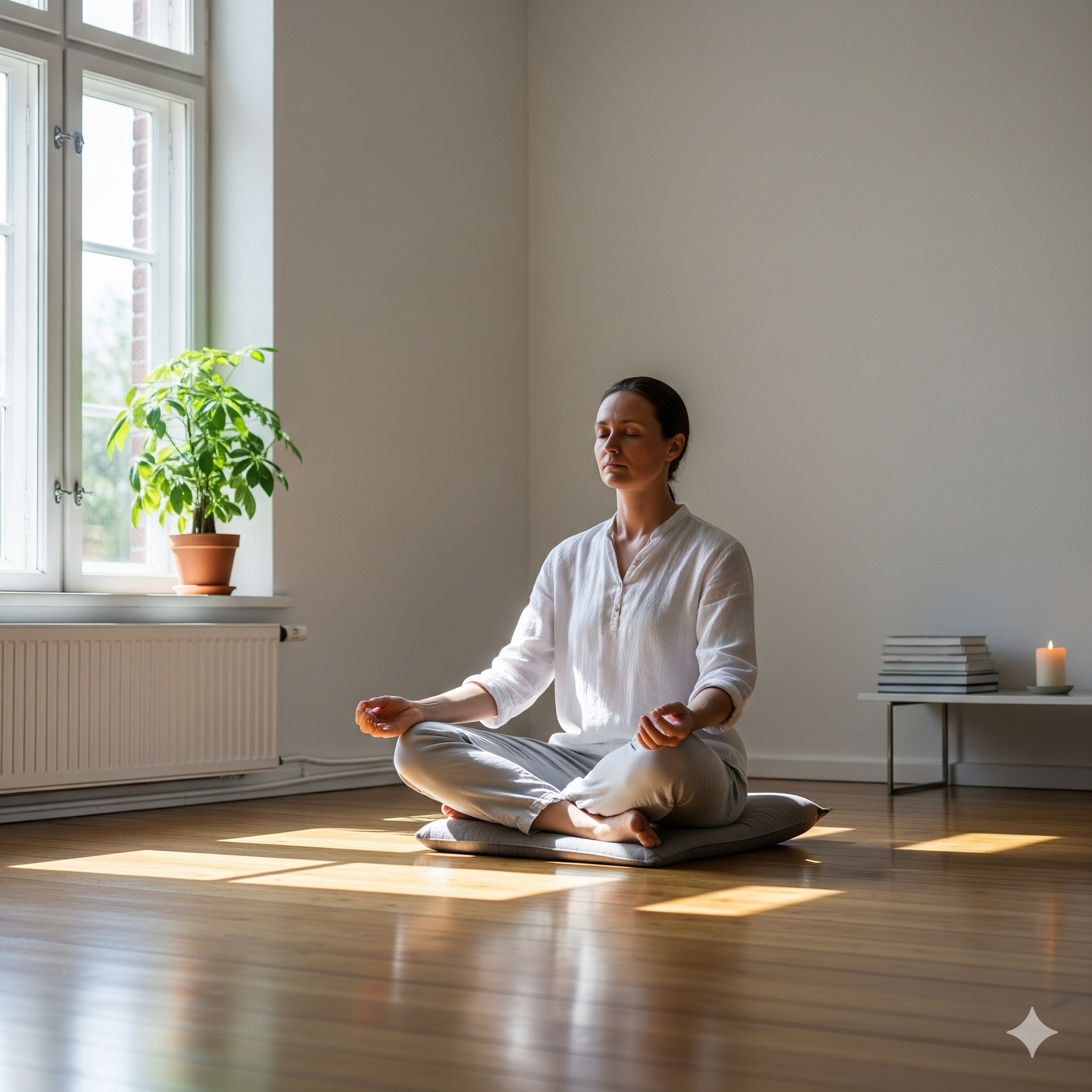Practical Steps to a Digital Detox Challenge
Discover practical steps to a digital detox challenge in our guide to digital minimalism. Reclaim your focus from social media addiction today.
Reclaim Your Focus: A Digital Minimalism Guide to Reducing Screen Time and Living a More Intentional Life
There’s a modern form of clutter that you can’t see or touch, but you can feel it buzzing in your pocket, dinging on your nightstand, and silently stealing your most precious resource: your attention. As a minimalist and the founder of Neat Tiny Home, I’ve spent years helping people declutter their physical spaces to create a sense of calm and intention. But I’ve come to realize that for many of us, the most overwhelming clutter isn’t in our closets; it’s on our screens. Our digital lives, once promised as tools for connection and productivity, have become sources of anxiety, distraction, and endless comparison.
If you’ve ever found yourself mindlessly scrolling for hours, feeling a phantom buzz in your pocket, or experiencing a jolt of anxiety when you’re away from your phone, then this guide is for you. This is your complete roadmap to digital minimalism. We’re going to explore a series of clear, practical steps to a digital detox challenge that will help you reset your relationship with technology. We’ll look at the powerful forces driving social media addiction and, most importantly, we’ll build a new philosophy for mindful technology use. My goal is not to convince you to abandon technology and live in a cabin (though that has its own appeal!). It’s to help you demote your devices from being the master of your attention to being a simple tool that serves your real-life goals. It’s time to reclaim your time, your focus, and your life.
The Modern Dilemma: Drowning in a Sea of Digital Noise
Before we can begin the detox, we have to understand the forces we’re up against. The feeling of being overwhelmed by our digital lives is not a personal failure; it is the result of a deliberate and incredibly sophisticated system. We live in what tech ethicists call the “Attention Economy.” In this economy, your attention is the product being bought and sold. Companies that provide “free” services, like social media platforms and news sites, are in a constant, fierce competition to capture and hold as much of your screen time as possible, because your eyeballs are what they sell to advertisers. As Tristan Harris from the Center for Humane Technology puts it, it’s a “race to the bottom of the brain stem” to keep you hooked.
Recognizing the Signs of Social Media Addiction and Digital Overload
This constant battle for our attention has real consequences. The design of these platforms, with their infinite scrolling, variable rewards (you never know when you’ll see a great post), and social validation loops (likes and comments), can be genuinely addictive. According to mental health resources like the McLean Hospital, an affiliate of Harvard Medical School, excessive social media use is linked to increased rates of anxiety, depression, poor sleep, and low self-esteem. Some signs that your digital use might be becoming problematic include:
- Feeling anxious or irritable when you can’t check your phone.
- Compulsively checking your phone without a clear purpose.
- Spending more time on social media than you intended, often losing track of time.
- Comparing yourself negatively to others online.
- Neglecting in-person social interactions in favor of online ones.
- Finding it difficult to concentrate on a single task without being interrupted by your phone.
Introducing Digital Minimalism: A Philosophy for Mindful Technology Use
The antidote to this digital maximalism is a philosophy known as digital minimalism. Popularized by computer science professor and author Cal Newport, this concept provides a powerful framework for a more intentional relationship with technology. It is the heart of mindful technology use. In his book, “Digital Minimalism,” Newport defines it as: “A philosophy of technology use in which you focus your online time on a small number of carefully selected and optimized activities that strongly support things you value, and then happily miss out on everything else.” It’s not about rejecting technology; it’s about using it as a tool to support your values, not as a source of cheap, low-quality distraction.
The Joy of Missing Out (JOMO) vs. The Fear of Missing Out (FOMO)
A key mindset shift in digital minimalism is embracing JOMO, the Joy of Missing Out. For years, social media has thrived on FOMO, the Fear of Missing Out. This is the anxiety that something exciting or interesting is happening elsewhere, and you’re not a part of it. JOMO is the exact opposite. It’s the satisfying feeling of being disconnected, of being present in your own life, of reading a book, going for a walk, or having an uninterrupted conversation without worrying about what’s happening in the digital world. A digital detox is the fastest way to experience JOMO and realize that you’re not actually missing anything important. In fact, you’re gaining something far more valuable: your own life.
Preparing for Your Digital Detox: Setting the Stage for Success
Jumping into a full digital detox without any preparation can be jarring and is more likely to fail. Just like preparing for a physical cleanse, a little bit of prep work for your digital cleanse will dramatically increase your chances of success. This is where we lay the groundwork for the practical steps to a digital detox challenge.
- The Digital Audit: For one or two days, just observe your own behavior without judgment. Use the screen time tracking features on your phone (both iPhone and Android have them built-in) to get a clear picture of where your time is actually going. How many times do you pick up your phone? How many hours are you on Instagram? The data might shock you, but it’s crucial to have a baseline.
- Define Your “Why”: What do you want to do with the time you reclaim? This is the most important step. Write down a list of high-quality, analog activities you’ve been wanting to do but “never have time for.” This could be reading more books, learning a new instrument, going for daily walks, or starting a new hobby. This list isn’t just a distraction; it’s what you will be actively choosing *instead* of mindless scrolling.
- Choose Your Detox Level: Cal Newport recommends a full 30-day “hard reset” where you remove all optional technologies from your life. This is the most effective method. However, if that feels too extreme, you can opt for a more gradual approach, which we’ll outline below. The key is to commit to a specific plan.
- Inform Your People: Let your close friends and family know what you’re doing. You can say, “Hey, I’m doing a digital detox for a few weeks to try and be more present, so if you need me, please call or text. I won’t be checking social media.” This manages expectations and prevents people from thinking you’re ignoring them.
The Main Event: Practical Steps to a Digital Detox Challenge (A 30-Day Plan)
Here it is: your week-by-week action plan. This is a structured approach that gradually removes the noise and then helps you mindfully reintroduce technology on your own terms. This is the core of our guide to the practical steps to a digital detox challenge.
| Week | Theme | Key Actions |
|---|---|---|
| Week 1 | The Great Pruning | Delete all non-essential apps, especially social media and games. Unsubscribe from 20+ email lists. Unfollow accounts that don’t add value. |
| Week 2 | Creating Friction | Turn off ALL notifications except for calls and texts from your favorite contacts. Move all remaining “junk” apps off your home screen into a folder. Set your phone to grayscale. |
| Week 3 | Reclaiming Time | Designate “phone-free” zones and times (e.g., no phones in the bedroom or at the dinner table). Schedule analog hobbies from your “Why” list. Practice solitude. |
| Week 4 | The Mindful Reintroduction | Carefully consider which, if any, apps you want to reinstall. Create a “Technology Philosophy” document with strict rules for your future use. |
Detailed Breakdown: Taming Your Notifications for Permanent Peace
Of all the steps, turning off your notifications is perhaps the single most impactful. Notifications are the mechanism by which tech companies hijack your attention. They are a constant, external interruption that pulls you out of the present moment. Go into your phone’s settings and systematically turn off all notifications for every single app, with a few possible exceptions:
- Phone calls from your contacts.
- Text messages from your contacts.
- Calendar alerts for appointments.
Life After the Detox: Creating a Long-Term Philosophy of Mindful Technology Use
The goal of a digital detox is not just to survive 30 days without your favorite apps. It’s to create a permanent, healthier relationship with technology moving forward. The final week of the challenge is about reintroduction, but it must be done with extreme intentionality. Before you reinstall any app, you must ask yourself a series of hard questions: “Does this app genuinely add significant value to my life? Is that value worth the time and attention I have to give it? Is there a better way to get that same value?” For example, you might realize you don’t need the Facebook app on your phone; you can just check it once a week on your laptop. This process of creating your own personal “technology philosophy” is the key to lasting change. It’s the ultimate act of mindful technology use.
This journey of reclaiming your focus is one of the most important things you can do for your mental health and well-being in the modern world. It’s about choosing the rich, textured, and sometimes boring reality of your own life over the hyper-curated, endlessly distracting digital world. It’s about choosing connection over connectivity.
Frequently Asked Questions (FAQ)
What am I supposed to do when I’m bored? My phone is my go-to for killing time.
This is the most common challenge, and it’s actually a wonderful opportunity! The state of “boredom” is incredibly valuable; it’s where creativity and new ideas are born. Embrace the boredom. Instead of reaching for your phone, let your mind wander. Or, be prepared with your list of analog hobbies. Keep a book in your bag. Learn to knit. Practice a musical instrument. The goal is to replace low-quality digital distraction with high-quality analog engagement.
I use social media for my job. How can I do a detox?
This is a valid concern. The key is to set strict boundaries. You can do a “personal” detox while still maintaining your professional presence. Delete the apps from your phone and only access them from your desktop computer during specific, scheduled work hours. Use a website blocker to prevent yourself from accessing them outside of these hours. This turns social media back into a tool you use for a specific purpose, rather than an omnipresent distraction.
This sounds really hard. What if I fail?
You can’t fail! This is not a pass/fail test. It’s an experiment. The goal is to learn about your own habits and to find a better balance. If you find yourself mindlessly scrolling one evening, don’t beat yourself up. Just notice it without judgment and put the phone down. Every moment is a new opportunity to be more intentional. For more on the self-compassion needed for habit change, I love the resources from mindfulness experts like those at Mindful.org.





Post Comment